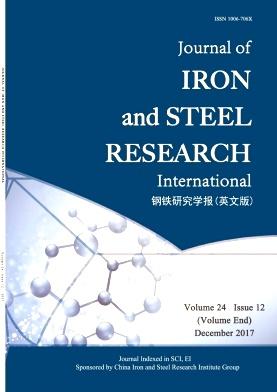Characterizing microstructure and texture after recrystallization annealing of Hi-B steel with simutaneous decarburization and nitriding
Abstract
How to manufacture the high magnetic induction grain-oriented silicon steel (Hi-B steel) by the process featured with the primary recrystallization annealing was demonstrated, during which nitriding and decarburizing were simultaneously realized in laboratory. By the techniques of optical microscope, scanning electronic microscope and electron backscattered diffraction, both the microstructure and the texture in the samples were characterized. The samples had been subjected to nitriding to different nitrogen contents at two specified temperatures using the two defined microstructural parameters : the grain size inhomogeneity factor σ* and the texture factor AR. The former is the ratio of the mean value to standard deviation of grain sizes; the latter is the ratio of the total volume fraction of the harmful textures to that of beneficial textures including {110} <001>. When the N content increased from 0. 0055 % to 0. 0330% after the annealing at both 835 and 875 °C, the resultant recrystallized grain size decreased hut σ* changed little; whilst the rise of annealing temperature from 835 to 875 °C resulted in the increase in both grain size and σ*. Moreover, either the injected N content or temperature had insignificant influence on the components of primary recrystallization texture developed during annealing. However, the increase of temperature led to the decreases in both intensity and volume fraction of {001} <120> and {110} <001> textures but increases in the {114} <481> and γ fiber textures and the resultant decrease of AR.

 求助内容:
求助内容: 应助结果提醒方式:
应助结果提醒方式:


